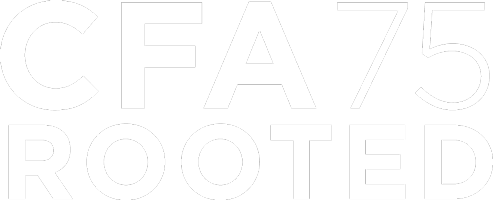Huntsman Cancer Institute (HCI) has a long legacy of leading the world in cancer treatment. As a National Cancer Institute Designated Comprehensive Cancer Center, it meets the highest standards of cancer care and research. But, it hasn’t become a leader just by perfecting the already-established methodologies of treatment. At HCI, they constantly seek out and implement innovative therapies – and for the last decade, more and more of those include artistic practices and experiences.
HCI couples a fierce curiosity for new methods of care with a mission-driven focus on the patient and a commitment to unified work, and the results have been unparalleled. One of HCI’s such endeavors is its Linda B. and Robert B. Wiggins Wellness and Integrative Health Center, which promotes physical and emotional wellbeing and a sense of balance for people affected by cancer.
Established in 2005, HCI’s renowned wellness program has grown to be one of – if not THE – most comprehensive and integrated centers in the nation offering everything from music therapy to group painting projects to modern dance, creative writing, acupuncture, exercise, nutritional counseling, massage therapy, and hypnosis. Unlike other centers across the country, HCI’s program serves more than just the patients – they extend care to both caregivers and the staff of their outpatient clinics and hospital as well.
The degree to which the wellness programs are integrated into the hospital’s overall approach to healing and the hospital’s physical space makes it unique as well. The Center has a prominent 2,200 square-foot space near the hospital’s entrance, and utilizes additional spaces for arts, cooking classes, meditation, yoga, and more.
The program started under the leadership of Ray Lynch and Janet Bloch who hired Dr. Pam Hansen to complete fitness assessments and provide acupuncture. Bloch recruited a rowing instructor who also taught yoga for cancer survivors. English and Ethnic Studies Professor Emeritus Meg Brady founded a storytelling program called Your Story, through which Brady asks “memory-trigger” questions giving people the opportunity to reflect on their past and record new perspectives for moving forward.
“Institutionally, it pleases me very much that you allow staff to attend, and that you do not provide only physical activity and spiritual stuff,” said one HCI staff participant. “Art also works! I noticed a big improvement when Shelley White came on. You can clone her… if possible.”— Program participant
As more patients sought these new services, they requested others. And in 2006, Block sought out to Shelley White, MSW, LCSW, to help grow and diversify the program.
And has she ever.
Now the Manager of the Center, White oversees a staff of 45 who handle around 50 visits daily (totaling roughly 15,000 visits annually). She credits the sizable growth to the overwhelming support and interest in the program.
It’s White, however, who is to be credited for the explosion of the arts-related programs. In 2012, she applied for and won a LIVESTRONG Creative Arts Center grant to fund the Artist in Residence program, for which she snagged local artist Jorge Rojas to the position. He has since gone on to become the Director of Education & Engagement for the Utah Museum of Fine Arts, but the walls of the Center are still adorned with stunning pieces made by the collaboration of Rojas and his participants.
In its second iteration, the Artist in Residence program hosted Colour Maisch, a University of Utah College of Fine Arts alumna. And, now in its third cycle, Lindsay Frei, also an alumna of the U’s College of Fine Arts, is the Artist in Residence. However, because the program’s rapid expansion, Maisch has stayed on as a Consultant and Workshop Coordinator to help accommodate the increasing needs and offerings. Together, the two provide creative activities including working with clay, collage, drawing, ink brush, stenciling, leather and craft work, watercolor and facilitating painting parties. They also bring in renowned guest artists like this last month’s visitor, Margaret Peot.
From pain management to personal empowerment, and from creative expression to collaboration, the benefits of these therapies are as diverse as the activities themselves.
“It is the best job in the world to facilitate programs that honor the full humanity of people affected by a formidable disease,” White says. “And seeing their successes fuels our commitment to exploring the power of the arts and creativity as healing tools that can change the way we practice medicine.”
-
 6th Floor Multipurpose Room with Rojas' collaborative painting on display
6th Floor Multipurpose Room with Rojas' collaborative painting on display
6th Floor Multipurpose Room with Rojas' collaborative painting on display
6th Floor Multipurpose Room with Rojas' collaborative painting on display
-
 HCI's rowing group on the Great Salt Lake
HCI's rowing group on the Great Salt Lake
HCI's rowing group on the Great Salt Lake
HCI's rowing group on the Great Salt Lake
-
 Yoga class at HCI's Wellness Center
Yoga class at HCI's Wellness Center
Yoga class at HCI's Wellness Center
Yoga class at HCI's Wellness Center
-
 Another collaborative Rojas painting is on display in a consultation room
Another collaborative Rojas painting is on display in a consultation room
Another collaborative Rojas painting is on display in a consultation room
Another collaborative Rojas painting is on display in a consultation room
-
 Beth Hardy, HCI's music therapist
Beth Hardy, HCI's music therapist
Beth Hardy, HCI's music therapist
Beth Hardy, HCI's music therapist
-
 A work by one of the Center's participants
A work by one of the Center's participants
A work by one of the Center's participants
A work by one of the Center's participants
http://finearts.utah.edu/about/news/the-finer-points-blog/item/1139-hci-makes-healing-an-art#sigProId7f1d4334d2


